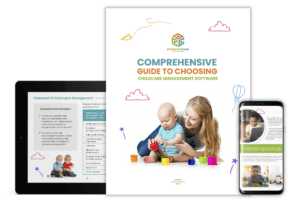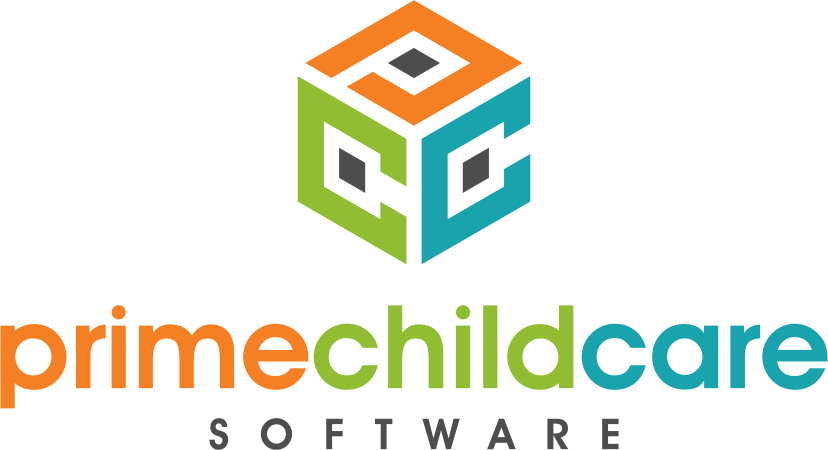Childcare is about movement. Children gravitate from the classroom to the playground. Within the span of a day, they may alternate between shared spaces and individual workstations multiple times. Often, it can be a challenge to keep track of a child’s movements, let alone ratio counts. Yet, maintaining optimum classroom ratios is critical to complying with quality standards.
To do this, you need accurate records. Otherwise, your center may find it a challenge to comply with teacher-student ratio requirements. At a minimum, a compliance violation must be corrected within a specified timeframe.
Individual states, not the federal government, oversee all compliance requirements and corrective measures. As a result, the consequences for failure to comply vary from state to state. In that light, a software solution that features scheduling and attendance tracking makes it easier to meet quality standards.
What are Classroom Ratios?
Classroom ratios refer to the number of children under the charge of a caregiver. The National Association for the Education of Young Children (NAEYC) publishes ratio guidelines; however, states can set their own ratio standards. In most instances, states allow more children per caregiver than the NAEYC.
That said, every childcare center or school should check its state and local websites for more guidance about mandatory ratios.
The following ratios for infants through high-school graduation are from the NAEYC guidelines.
Infants
Infants are babies from birth to 15 months. A room of six infants should have two caregivers. That’s a ratio of one caregiver for every three babies (1:3). In addition, the maximum number of infants per room should not exceed eight with a maximum ratio of 1:4.
Toddlers
The recommended ratio for toddlers from one year to 28 months is 1:3. One caregiver should work with three toddlers in a group of six. In classes with eight to 12 toddlers, there should be at least one instructor for every four toddlers.
Twos and Threes
A room of two-year-olds should have one teacher for every four children. For groups of 10, the minimum ratio should be 1:5, and for groups of 12, the ratio should be 1:6.
Developmentally, there’s a significant difference between a two and a three-year-old. So, maintaining optimum classroom ratios is critical for this age range. Three-year-olds (30 to 48 months) are better at listening and following instructions. For three-year-olds, the instructor to children ratio should be 1:7. For groups of 16 or more, the ratio should be at least:
- 1:8 for 16 children
- 1:9 for 18 children
- 1:10 for 20 children
Finally, the maximum number of children in a toddler class should not exceed 20.
Fours and Fives
Four and five-year-olds are more independent in nature, so the child to instructor ratio should be higher. Still, the recommended maximum number of children per classroom remains at 20. There should be one instructor for every eight children in this age group. For a group of 19, the ratio should be 1:9. And, for 20 children, the ratio should be at least 1:20.
Kindergartners
For kindergartners, the recommended classroom size is 24, with a teacher to student ratio of at least 1:12. However, a ratio of 1:10 is preferred.
School-Age Children
Your facility may or may not provide care for school-age children. If you do, ratios for children from first through 12th grade will depend on the state. The highest ratio is in Mississippi with 1:27. Meanwhile, several states recommend a classroom ratio of 1:16 or 1:15. For the right ratios, be sure to check with your state Department of Education.
Why Maintain Optimum Classroom Ratios?
Educators and administrators may argue about optimum class sizes or the validity of test results. However, studies have shown that reducing the class size has meaningful long-term effects on student academic performance. It is suggested that reduced class sizes also impacts non-cognitive outcomes. The educational benefits are most noticeable in the early stages of childhood development. But, aside from academic improvement, why are classroom ratios used?
The Safety of Children
Classroom ratios were primarily established for the safety of the child. Younger children require a lower teacher to child ratio. Obviously, an infant is not as self-sufficient as a kindergartner. Also, ensuring a child’s safety goes beyond the classroom. It is also about making sure children are out of harm’s way during a natural disaster such as tornadoes or flash floods.
The Health of Teachers and Students
Smaller class sizes also reduce the occurrence of infectious diseases. During the flu season, some facilities may close due to illness. Often, the lack of teachers forces the closure. Keeping caregivers healthy is another reason for lower ratios. In light of the COVID-19 crisis, daycare centers that remain open should follow CDC guidelines for school settings.
Finally, maintaining optimum classroom ratios is also an effective way to avoid burnout and decrease high staff turnover.
Parental Assessment
All things considered, many parents favor childcare facilities with the lowest teacher to child ratios. The following quote is an example of what appears in every guide to finding childcare.
In general, lower staff-to-child ratios are one indicator of a higher-quality program because a child care provider can be more sensitive and responsive to children’s needs if he/she is responsible for a smaller group of children. The lower the ratio, the better the program.
Since parents are being told that low ratios are an indicator of quality, maintaining them is essential for business viability.
Maintaining Optimum Classroom Ratios With the Right Technology
Maintaining a record of your ratios is necessary for compliance reporting. If the state licensing agency decides to perform an unannounced inspection, you don’t want to be caught unawares. And, rushing to put together the necessary data while inspectors wait can reflect poorly on your daycare center.
However, technology can substantially reduce the time and effort involved in tracking classroom ratios. With student attendance and scheduling modules, records can be kept up-to-date throughout the day. In addition, you can run reports to evaluate your classroom ratios and note areas for improvement. These reports can be used during compliance audits and open house days, when parents ask for the data. With less time spent on administrative duties, you’ll have more time for what you do best: interacting with parents and ensuring that the children under your care thrive.
Looking for a technology solution to help your center maintain optimum classroom ratios? Prime Child Care Software has attendance and scheduling modules that can be accessed from any device. If you’d like to learn more about our leading-edge solution, contact us today.
Recent Articles from Prime:

Meeting Quality Standards With Optimum Classroom Ratios
Parents prize quality when looking for a childcare program. Get the right info about optimum classroom ratios to meet quality standards. … Read More

7 Top Digital Marketing Strategies for Daycares
How do you get parents to choose your daycare? Are you struggling to increase your enrollment numbers? If so, implement our top digital marketing strategies today! … Read More

Comprehensive Guide to Choosing the Best Childcare Management Software
When shopping around for childcare management software, there are a dizzying number of factors to consider: price point, capabilities, and customer support to name a few.
Check out this comprehensive guide to help you find the best childcare management software for you. … Read More

6 Inspiring Classroom Ideas for June
Summer is finally here! Implement these classroom ideas to keep your young charges excited about learning. … Read More

Childcare Registration & Enrollment Form Template
Knowing all of the information you need on an enrollment form for your center can sometimes be overwhelming. Check out this free enrollment form template to help ease the enrollment process for your center! … Read More

3 Reasons to Utilize a Dedicated Daycare Mobile App
Running a successful facility requires consistent and open lines of communication with parents. But, what happens when they ignore your attempts at communicating? This is where a dedicated daycare mobile app comes in. … Read More










